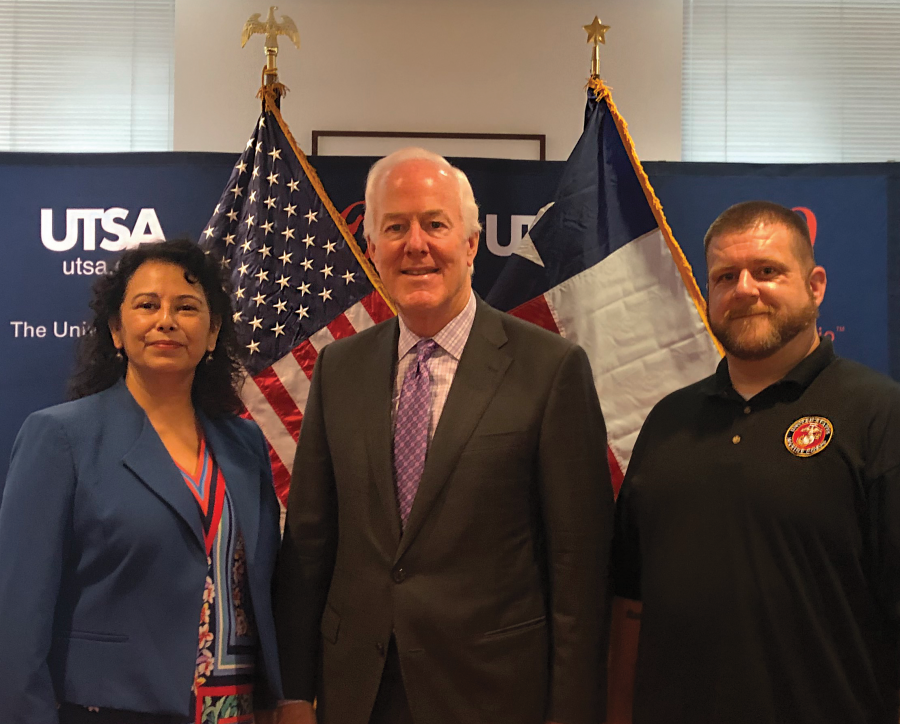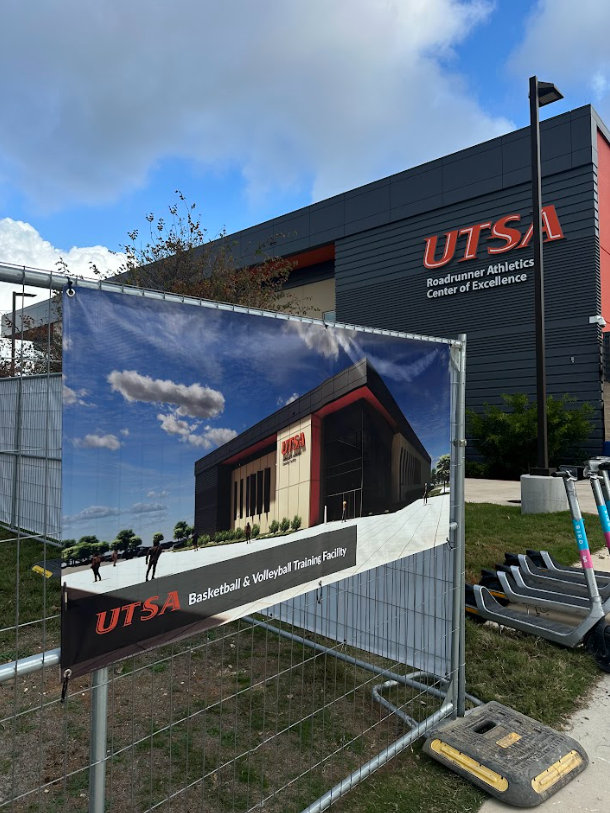U.S. Senator John Cornyn met with student veterans at UTSA to expand on the Edith Nourse Rogers Science, Technology, Engineering and Math (STEM) Scholarship. The scholarship was created from the Harry W. Colmery Veterans Education Assistance Act of 2017, also known as the “Forever GI Bill,” which provides an additional nine months of GI Bill eligibility or up to $30,000 in benefits for veterans pursuing STEM degrees.
On July 1, 2019, Cornyn introduced the Veteran STEM Scholarship Improvement Act, and the Bill was signed into law by President Donald Trump on July 31, 2019. The Bill reduces the number of credit hour eligibility in Texas where degrees range from 124-128 credit hours. This allows more veterans access to the Nourse STEM Scholarship.
“Previously it was 128 and now it’s 120 [credit hours]. That’s the little tweak to make more funds available to veterans for a longer period of time because many of them have timed-out after 36 months. What this does is allow them to continue their benefits longer to complete their course of study,” Cornyn said.
The scholarship is not just limited to undergraduate degrees. Veterans who have completed more than half of a graduate degree in the STEM field and have exhausted their federal benefits may qualify for additional GI Bill benefits under the Veteran STEM Scholarship Improvement Act.
“This [program] is focused on STEM in particular, but this doesn’t complete our work in terms of trying to figure out how we can provide those educational benefits for veterans that they’ve earned under the GI Bill. Maybe there are some other areas that we can collaborate on and perhaps expand those benefits,” Cornyn said.
UTSA veterans were formerly limited to only three programs under the Nourse STEM Scholarship: chemical engineering, civil engineering and mechanical engineering. Under the Veteran STEM Scholarship Act, the university has added the following 17 eligible programs: environmental science; computer science; cyber security; biomedical engineering; computer engineering; electrical engineering; biology; biochemistry; microbiology and immunology; mathematics; statistics and data science; chemistry; geology; physics; nutrition and dietetics; health; and public health.
Qiwei Chen, Student Veteran Association president, explained how the expanded GI Benefits will impact her education goals.
“This new scholarship will definitely cover me for longer, so now I’m thinking about activating it,” Chen said. “My first goal is to go to medical school. If I don’t get into medical school, I’m definitely thinking about getting a master’s in public health that can further my education and give me a better chance of getting into medical school.”
The Veteran STEM Scholarship Improvement Act now allows the Nourse STEM Scholarship to be applied to an additional 580 programs across Texas’ public institutions. For student veterans interested in obtaining more information, visit UTSA’s Veteran Certification Office located on the first floor of the John Peace Library.








